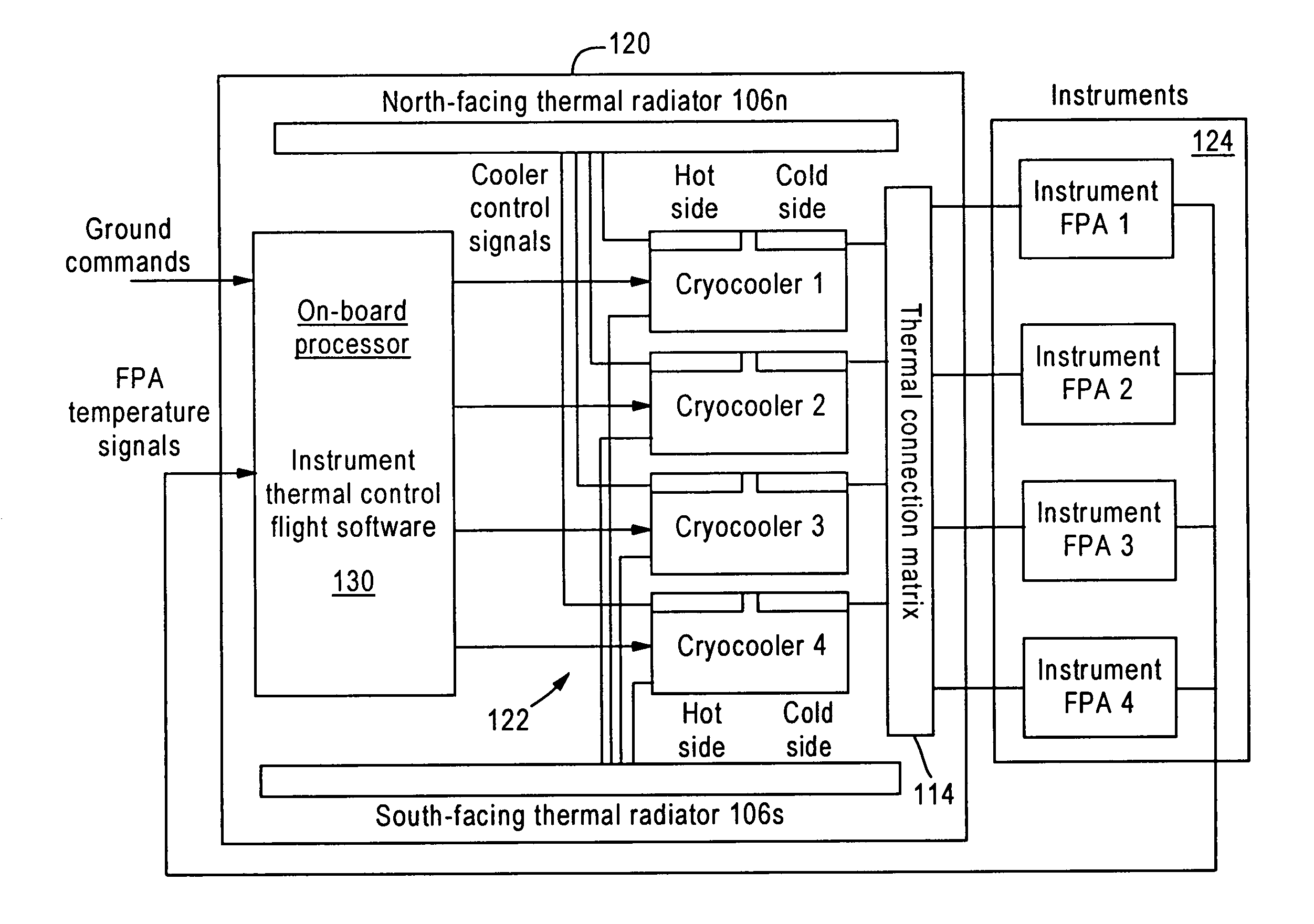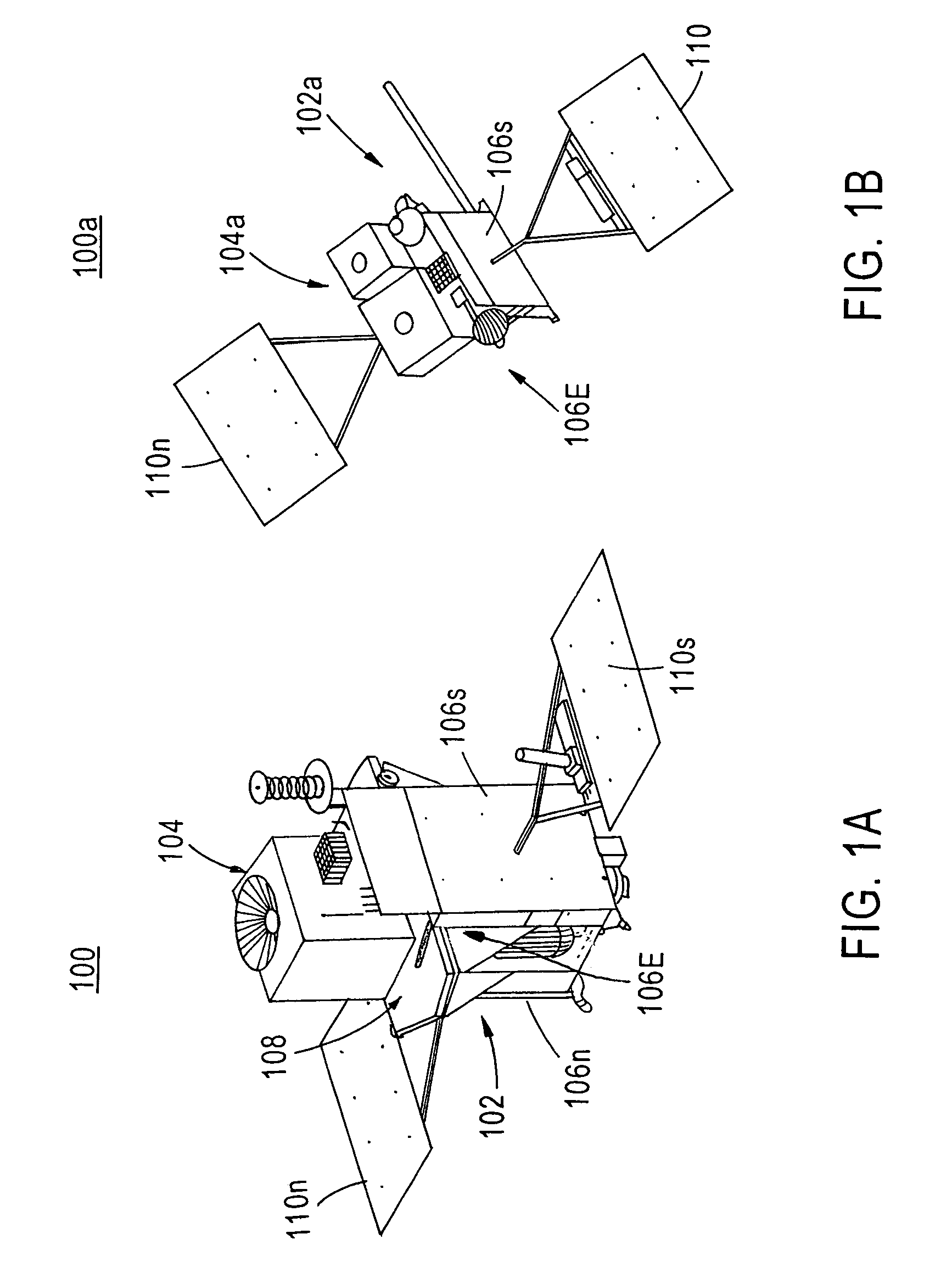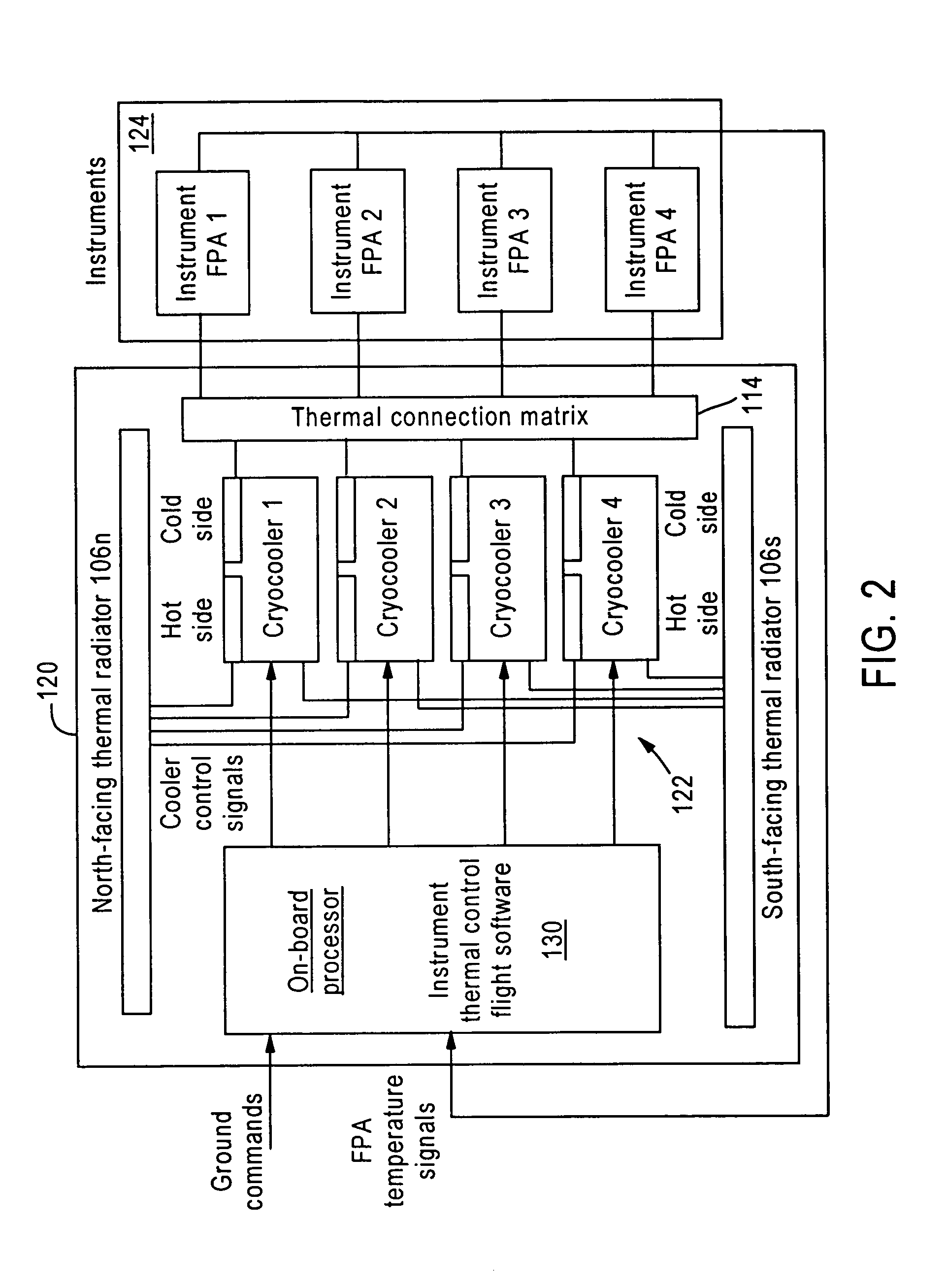Scalable thermal control system for spacecraft mounted instrumentation
a technology for spacecraft and instrumentation, applied in the direction of cosmonautic thermal protection, cosmonautic vehicles, transportation and packaging, etc., can solve the problem of increasing the launch cost and reducing the number of spacecraft, and increasing the cost of launch, etc. problem, to achieve the effect of reducing the impact of cooler-induced mechanical vibration
- Summary
- Abstract
- Description
- Claims
- Application Information
AI Technical Summary
Benefits of technology
Problems solved by technology
Method used
Image
Examples
Embodiment Construction
[0021]The instrument thermal control system and methodology described herein is applicable generally to any spacecraft, but has particular applicability to geosynchronous remote sensing satellites, such as NASA's GOES-R spacecraft, two examples of which are shown respectively in FIGS. 1(a) and (b). These spacecraft are similar in that they share a common bus 102, 102a, and carry at least one primary instrument, such as an imager or sounder, but support different instrument combinations. For example, spacecraft 100, shown in FIG. 1(a), may include an advanced baseline imager (ABI) 104, and spacecraft 100a may include instruments from an hyperspectral environment suite (HES) 104a.
[0022]The instruments include focal planes that must be maintained at cryogenic temperatures during operations. For example, an ABI focal plane may be required to operate at 70 deg. K, and an HES focal plane at 55 deg. K. The bus 102, 102a of each spacecraft supports a number of panels, such as thermal radia...
PUM
 Login to View More
Login to View More Abstract
Description
Claims
Application Information
 Login to View More
Login to View More - R&D
- Intellectual Property
- Life Sciences
- Materials
- Tech Scout
- Unparalleled Data Quality
- Higher Quality Content
- 60% Fewer Hallucinations
Browse by: Latest US Patents, China's latest patents, Technical Efficacy Thesaurus, Application Domain, Technology Topic, Popular Technical Reports.
© 2025 PatSnap. All rights reserved.Legal|Privacy policy|Modern Slavery Act Transparency Statement|Sitemap|About US| Contact US: help@patsnap.com



